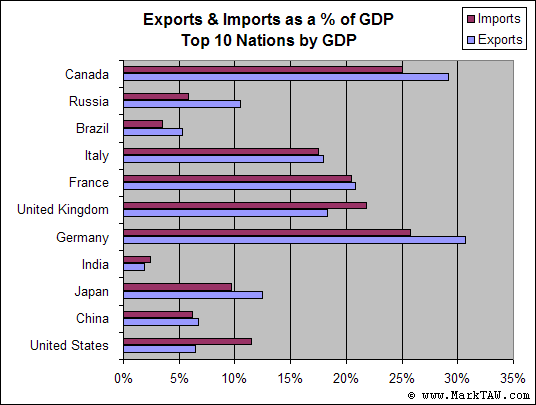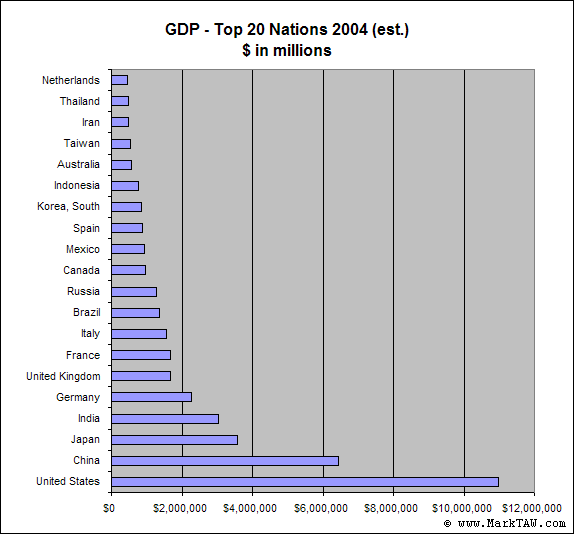

|
| weblog/wEssays | home | |
|
Are Japan and Germany Truly on the Mend? (October 12, 2005) 
There's been quite a bit in the media recently on the resurgence of Japan and the mending of Germany via a "grand alliance" of its two main political parties. Sounds good, but there's a huge fly in the ointment: those nations' dependence on exports to the U.S. and China to sustain their growth. But first, the good news about Japan emerging from its 15-year "lost decade" of wasted public spending, horrendous public and private debt, and sclerotic political reform process as reported in The Economist: The Sun Also Rises. On a more skeptical note, the Wall Street Journal isn't so sure that Germany has a coherent plan to emerge from its decade-long malaise: New German Coalition Is Unlikely To Tackle Major Economic Change. Meanwhile, the WSJ is glowing with praise for the powerhouse "rust belt" industries centered in Nagoya, Japan: Japan's Economy Gains Steam From Manufacturing Heartland. It's one thing to break out imports and exports, but these numbers don't reflect where the growth is in an economy. Thus, while it appears that imports/exports are a relatively small part of China's economy, this is deceptive: while 80% of the economy is rural/agricultural and government-led, all the explosive growth of assets, profit and wages is occuring in the export business, which is growing by some 30% annually. Recall that up to 40% of China's GDP growth is foreign investment. (See my essay China: An Interim Report for more in-depth reporting on China's economic and environmental challenges.) This reliance on exports for growth is also true of Japan and Germany. What the chart does reveal quite astoundingly is the utter dependence of the European economies on exports--especially Germany. And where are those exports going? Certainly a significant percentage are shipped to other E.U. nations, but the growth is all in shipments to China and the U.S. The same is true of Japan; what the WSJ article fails to explore is precisely the key issue of Japan's so-called resurgence: who's buying all the machine tools, cars and other manufactured goods made in Nagoya? China and the U.S., of course--it certainly isn't their domestic customers or the E.U. To put it plainly: Germany and Japan, the 2nd and 3rd largest economies in the world in terms of GDP, are extremely vulnerable to any slowdown or recession in either the U.S. or China. As a result, all the talk about their resurgence or recovery is misleading to the degree it doesn't reflect their extreme vulnerability to any slackening of demand in the U.S. or China, which would itself stop growing once the U.S. economy tanks. Here's a view of China's own vulnerability. 
Are we over-emphasizing America's importance here? Just look at the second graph, and note the U.S. dominance as a market for the rest of the world's goods. A 10% slowdown in the U.S. is the equivalent of a good-sized nation (South Korea, Mexico, Spain or Indonesia) vanishing off the face of the Earth. Also note that this graph is based on "purchasing power parity" (PPP) which is what the C.I.A. factbook uses. As measured by dollar activity, Japan and Germany are still larger than either China and India. But the point is obvious: the exporting nations of the world, most especially Germany and Japan, are completely reliant on the robust growth of their biggest markets, the U.S. and China. If either falters, so too will Germany and Japan. If that's resurgence, it's a very precarious one. * * * copyright © 2005 Charles Hugh Smith. All rights reserved in all media. I would be honored if you linked this wEssay to your site, or printed a copy for your own use. * * * |
||
| weblog/wEssays | home |